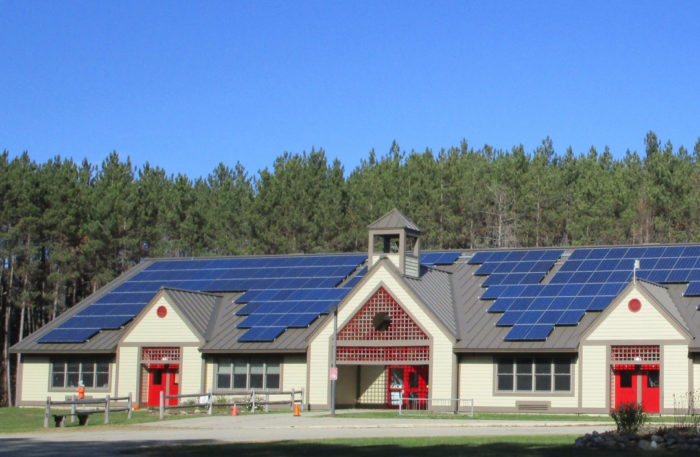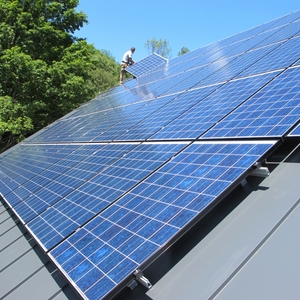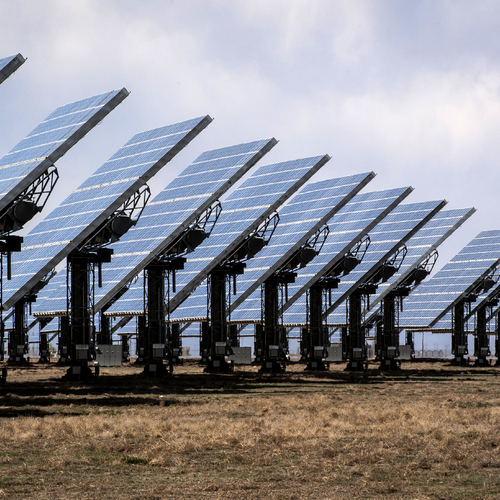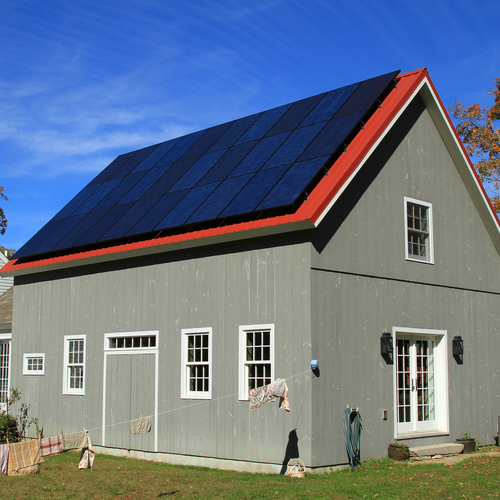
Image Credit: Martin Holladay
If the current federal tax credit for solar equipment remains intact, electricity generated by photovoltaic (PV) panels will cost no more than electricity provided by local utilities in 47 U.S. states by 2016, according to a report from Deutsche Bank.
Even if the tax credit drops from its current level of 30 percent to 10 percent at the end of 2016, the cost of solar electricity would reach this milestone (called “grid parity”) in 36 states, bank analyst Vishal Shah wrote in the October 26 report.
Already, the levelized cost of energy from solar sources is competitive in 10 states without any additional subsidies, the report said. In these states, the cost of solar electricity ranges from 11 cents to 15 cents per kilowatt hour, compared to the 11 to 37 cents/kWh retail price for grid power. (Two recent GBA news stories provide more perspective on this topic: PV Cost Reaches Grid Parity in 11 States and Solar Energy Costs Fall in 2013.)
The findings were contained in a lengthy market research report and summarized in an article posted at Bloomberg. (Deutsche Bank shared the report but wouldn’t authorize a link to its full content.)
Weekly Newsletter
Get building science and energy efficiency advice, plus special offers, in your inbox.
“The reason solar-power generation will increasingly dominate: it’s a technology, not a fuel,” Tom Randall wrote at Bloomberg. “As such, efficiency increases and prices fall as time goes on. The price of Earth’s limited fossil fuels tends to go the other direction.”
Without the tax credit, the picture isn’t as rosy
The current federal investment tax credit is due to expire at the end of 2016, and should it not survive in any form, the report says solar electricity costs will increase from 10 to 16 cents/kWh to a total of 15 to 21 cents/kWh, leaving only Hawaii at grid parity.
“In a 2017+ 10% ITC [investment tax credit] environment, solar would be at grid parity in ~36 states (vs. ~47 states with 30% ITC), assuming system prices and financing costs decline although the economics for solar would not be as attractive,” the bank report says. “Consequently, we expect to see a big rush of new installations ahead of the 2016 ITC expiration.”
Other key findings:
- Lower financing costs would be another boost for solar. The bank says that for every drop in financing costs of 100 basis points, the levelized cost of solar drops by 1 cents/kWh.
- More leasing will propel growth. Solar leasing companies are highly profitable, the report says, and they have a strong incentive to increase their customer base in advance of the tax credit expiration in 2016.
Separately, the International Energy Agency predicts solar will be the dominant form of energy by 2050, according to a report from Reuters. PV panels could generate as much as 16 percent of the world’s power while concentrating solar power plants would provide an additional 11 percent.
“The rapid cost decrease of photovoltaic modules and systems in the last few years has opened new perspectives for using solar energy as a major source of electricity in the coming years and decades,” IEA Executive Director Maria van der Hoeven told Reuters.















One Comment
Full costs of solar electricity
THe numbers may well be accurate as they are quoted, but they do not take into account the full costs of the (required) 100% backup at night-time, nor any transmission infrastructure costs.
If you want only modest and intermittent power, then fine, but for 24/7 power year round, solar has a long way to go. It works splendidly on my boat, but then I only use a radio, lights at night and a fan for the composting toilet - no serious current draw so a couple of heavy duty batteries are all that's needed. Most of us like to cook, eat and wash clothes too, in our houses, let alone heat them in winter!
Tony.
Log in or create an account to post a comment.
Sign up Log in